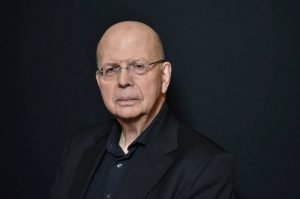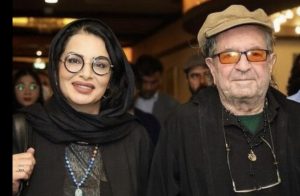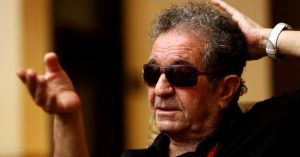Filmmaker Jean-Luc Godard, the godfather of France’s New Wave cinema, died at 91, the newspaper Liberation reported on Tuesday.
Who was Jean-Luc Godard?
Jean-Luc Godard, born December 3, 1930, was a Franco-Swiss filmmaker who was a key figure in the “French New Wave.” He is widely regarded as the boldest, radical, and influential Nouvelle Vague filmmaker, known for aesthetic innovations that defied Hollywood cinema traditions. His work demonstrates a deep study of film history, a thorough understanding of existential and Marxist philosophy, and a profound understanding of the fragility of human connections.
Family and childhood
Godard was born in Paris’s seventh district. Four years later, his father, Swiss doctor Paul Godard, relocated the family to Switzerland. Odile Monod, his mother, was from a rich protestant French family. Her father, Julien Monod, was a renowned banker in France and a well-connected figure in literary circles, with the writer Paul Valery as a close friend. Rachel, born on January 1, 1930, Claude, born in 1933, and Véronique, born in 1937, were the couple’s other three children.
The family settled in Nyon, near Lake Geneva. Paul Godard worked in a local private medical clinic. Godard’s family was rich and sophisticated; he subsequently described his childhood as “a kind of paradise.” During WWII, the family remained in Switzerland, though they made periodic journeys across the lake to Julian Monod’s house on the French side. Jean-Luc was already an ardent reader, having progressed from children’s adventure books to works by authors such as André Gide and André Malraux by the age of fourteen. He was also an avid sports lover who enjoyed tennis, skiing, and football.
Also read: Ten on 10: Why David Tennant is ‘My Doctor’, also arguably the best Doctor
A scholar
Godard enrolled at the Lycée Buffon in Paris in 1946, intending to study advanced mathematics before joining engineering school. Instead, he became addicted to the capital’s ciné-club explosion and began viewing movies all hours of the day and night. As a result, he failed his baccalaureate exam in 1948 and returned to Switzerland, where he enrolled at a Lausanne high school and lived with his parents. Because his father-son relationship was strained, Godard spent most of his spare time in Geneva socialising with other film fans. After getting interested in modern art, he also tried his hand at painting.
In 1949, Godard returned to Paris and enrolled at the Sorbonne after finally earning his baccalaureate. He took ethnology courses but quickly dropped out and enrolled to the city’s top film school, IDHEC. Because his application was refused, he instead studied film by seeing movies at Henri Langlois’ Cinématheque Francais and the Ciné-club Quarter Latin, where he met two other film enthusiasts, Francois Truffaut and Jacques Rivette. It was common for them to see three or four movies every day, or to spend an entire day in a single theatre. ‘The cinema screen was the wall we had to scale to escape from our lives,’ Godard later wrote.
A critic
Godard was a regular contributor to La Gazette du cinéma. He was only nineteen years old when he began writing complicated essays and reviews that demonstrated an assured and unique perspective on movies. In his largest piece, Towards a Political Film, he contended that cinema was not only a projection of reality but also a part of it. ‘At the cinema, we do not think, we are thought,’ he said in another essay. Cinema, for him, had become a transformative experience in which the gap between the viewer and what happened on the screen had vanished; by watching films, you were already a part of them.
But Godard and his friends wanted to do more than just watch and talk about movies; they wanted to make them. Godard got his start by helping Rohmer and Rivette with their first short films. Godard donated the funding for Rivette’s Quadrille, subsequently revealing that the monies came from stealing and selling books from his grandpa Julien Monod’s collection of Paul Valery first editions. Meanwhile, he led a bohemian existence on the left bank of Saint-Germain-des-Prés, alternating between the apartments of family friends and cheap hotel rooms. Among his closest friends was the colourful Paul Gégauff, a flamboyant right-wing writer whose devil-may-care attitude epitomised the kind of adventurous personality Godard admired and aspired to at the time.
Also read: Who was Maggie Peterson, actor dead at 81?
To dodge the draught, Godard assumed Swiss citizenship in December 1950 and joined his father on a voyage to New York, then through the West Indies to South America. By all accounts, he spent the majority of his time abroad alone in his room reading, far from savouring these new experiences. Nonetheless, his travels in South America, which he never discussed, gave him a sense of mystery and adventure when he returned to Paris in April 1951.
Truffaut was among many who noticed Godard was more reserved and aloof than usual, despite the fact that his enthusiasm for cinema remained as great as ever. He pushed himself into assisting others in making films, particularly with Eric Rohmer on Présentation (later re-titled Charlotte et son steak), in which he starred as Walter, a young guy who brings one young woman to another in the hopes of making one envious of the other.
For the time being, Godard refrained from making his own films, instead focused his creative resources on writing for the new magazine founded by Andre Bazin and his associate Jacques Doniol-Valcroze. Among his most important contributions to Cahiers du cinéma was an article in the September 1952 issue that amounted to a kind of personal theoretical manifesto, as well as a counterargument to an earlier article by Bazin in which the critic attacked the ‘obsolete play of shot-reverse shot’ used in many Hollywood productions.
Godard, writing under the pen name Hans Lucas, commended the usage of shot-reverse-shot in depicting a character’s mental point of view and inner existence in the piece titled Defence and Illustration of Classical Découpage. He accused Bazin of seeking to abandon this vital method, which directors like Howard Hawks employ so well, in the name of theoretical prejudice. It was a bold step for a young man to oppose such a famous critic, and it represented Godard’s already strong sense of self-belief.
The director
Working with Eric Rohmer, Godard devised a series of short films centred on a pair of young women named Charlotte and Veronique. The first, Charlotte et Veronique, or Tous les garcons s’appellent Patrick, was directed by Godard from a story by Rohmer and starred Anne Colette and Jean-Claude Brialy as a young man who picks up two ladies in quick succession. Unbeknownst to him, the two women are roommates who discover his deception the next day when walking in the park with him and catch him with a third girl.
A second film, Charlotte et son Jules (Charlotte and her Jules), starred Anne Colette alongside Jean-Paul Belmondo as the jilted Jules who berates his beloved when he thinks she’s returned to him only to pick up a toothbrush. Both films are filled with personal references to Godard’s own life, but the womaniser in the first was inspired by Paul Gégauff’s adventures rather than his own restricted experiences.
Also read: ‘We’re talking solidarity…you’re talking dolly shots’: Cannes amid unrest
Godard’s next short film came to him completely unexpectedly. In February 1958, Truffaut shot an improvised comedy in and among the floodwaters that briefly engulfed Paris. Embarrassed to be producing a comedy in the middle of catastrophe, Truffaut gave the film over to Godard, who edited the video into some type of continuity and wrote dialogue and a narration that was later dubbed later that year. The film’s content, which was full with jokes, references, and quotations, mixed with unexpected editing and music juxtapositions, made it a startling harbinger of his future film style.
While Godard experimented with short films, his pals were making inroads into the professional film industry. Chabrol, who had been working in Twentieth Century Fox’s Paris office’s publicity department since 1955, left after two years to produce his debut feature Le Beau Serge. He arranged for Godard to be employed in his place, which proved fortunate in a number of ways. Working in a major studio’s publicity department, Godard learned the methods that would help bout de souffle (Breathless) become an unexpected success two years later. He also met and befriended producer Georges de Beauregard, a connection that would be vital to his future career.
In the summer of 1958, Godard took over as film critic at Arts magazine from Truffaut, who was set to release his debut feature film. He also found extra freelance employment as an editor and scriptwriter through other networks. Finding someone prepared to fund his own feature projects, on the other hand, proved more difficult, and as his Cahiers colleagues, including now Jacques Rivette and Eric Rohmer, went into production on their own feature films, he became increasingly irritated with his lack of progress.
Everything changed overnight in the spring of 1959. Francois Truffaut’s Les Quartre Cents coups (The 400 Blows) received overwhelming acclaim at the Cannes Film Festival, winning the Best Director Award and endorsements from a number of high-profile people. Suddenly, everyone in French cinema was talking about a New Wave. Godard promptly took the train down to the festival, sensing that Truffaut’s triumph might open doors for him.
An influence
Several films later, each with its own distinctive path, the events of 1968 provided Jean-Luc Godard with the opportunity to demonstrate his devotion to the radical politics he advocated as well as his dedication to the young activists with whom he now associates himself. Despite his stated exit from cinema, he continued to produce pictures at an even higher rate than previously. However, the films he now created, often in partnership with his comrade-in-arms Jean-Pierre Gorin under the pen name ‘Dziga Vertov,’ were meant to serve his political ideals, alienating many while inspiring others.






